Air purifiers for an apartment: what are there and how to choose?

Nowadays, residents of small towns and megalopolises are increasingly thinking about the need to clean the air in their homes and apartments from substances dangerous to humans that cause various diseases. You can cope with this task if you use an air purifier. In stores, they are sold in a fairly wide range, so everyone can choose a model for every taste and wallet.
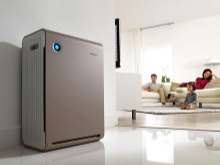
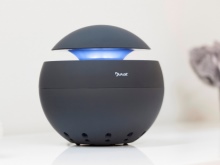
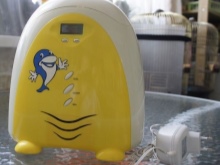
What are they for?
Nowadays, environmentalists talk a lot about air pollution. However, in addition to the general poisoning of the atmosphere, dirty air in residential and office premises is no less dangerous for a person - it happens that being outside your own home becomes much safer. Take any apartment: dust, smoke and microorganisms - all of them penetrate into the room, are absorbed by upholstered furniture, carpets, toys, home textiles and even walls.

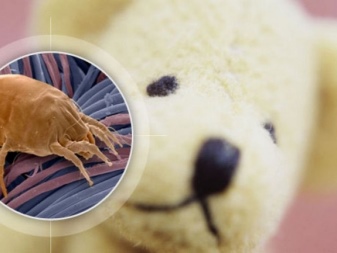
Doctors believe that dust is one of the most dangerous sources of infection for children and adults. House dust is inhabited by microscopic dust mites, they can cause severe allergic reactions. These microorganisms feed on particles of dead human skin, which are present in huge quantities in any bedroom on sofas and beds. Walls, floors and ceilings in any home are made of porous materials, and toxic contaminants accumulate in them.
Foods and objects that fill a room with odors also do nothing to improve air quality. Indoor indoor dirt lives and multiplies in the form of mold, fungi and other pathogenic microflora - all these microbes feel great next to a person due to the large amount of heat, moisture, food and the lack of natural air circulation. Scientists have found that about 90% of all infections are transmitted indoors, while outdoors, germs and dust are neutralized.
All conditions are created in closed rooms for their active reproduction.
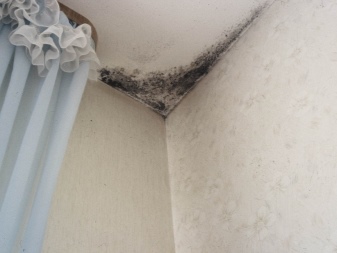

Do you want to breathe that kind of air? We think the answer is obvious. The World Environment Agency proposes the following measures.
- Remove all sources of dirt and dust from the house: carpets, aging fabrics and synthetic finishes that can release toxic substances.
- Strengthen the ventilation of the dwelling. However, this advice is good only if the house is located somewhere in nature (in a summer cottage or close to a forest). In most cases, the air coming out of the window is just as dirty.
Unfortunately, even the best ventilation system can change the air in rooms by only one third. All modern air conditioning systems are designed in such a way that almost all pollution begins to circulate in the room itself, so we breathe it in over and over again.
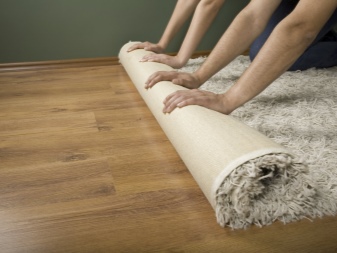

The best solution is always offered by nature. So, the sun is able to create electrical discharges, due to which some of the particles in the air become negatively charged, negative ions are formed. They are able to be attracted to dust particles flying through the air and form other, new particles, which are so heavy that they fall to the ground, and the air itself becomes cleaner. Everyone knows that during rain and thunderstorms, ozone is formed.It naturally cleans the air from all harmful pollutants present in it.
Of course, not everyone can live in nature. but everyone can use air purifiers that recreate natural cleaning at home, restore as much as possible a comfortable air composition in residential, office and industrial premises.
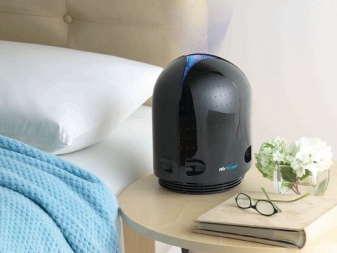
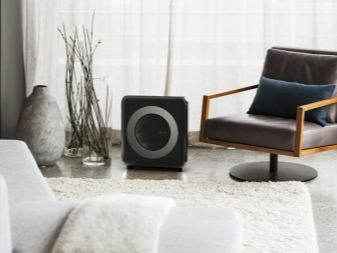
How do they work?
The undoubted advantage of any cleaners is that they work autonomously. The owners of the premises do not have to make almost any effort, all that is required of them is to turn on the air cleaner, connect it to the AC mains and timely monitor the wear of the filters.
The mechanism of operation of devices largely depends on the design parameters of the device itself.
A fan is located inside the body of any purifier, it draws in the polluted air and brings it to the cleaning units, and then clean air is removed through a special hole.
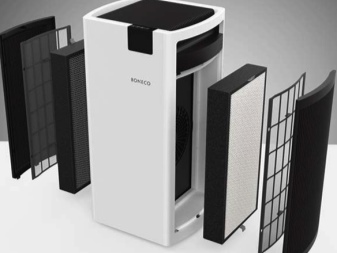
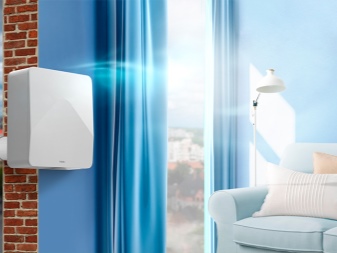
The features of the devices operation directly depend on the type of cleaning.
- Filtering cleaners. As a rule, manufacturers complete devices with several filters at once, each of them solving its own problems. So, coarse filters are a dense fabric, it retains large particles that are visible even to the naked eye (hair, animal hair and other types of contaminants). This filter needs regular cleaning.
An absorbent carbon filter has the ability to absorb unpleasant odors as well as volatile vapors such as kitchen fumes. In addition, this filter serves as a reliable barrier for solid particles. It needs to be replaced every 3-4 months. The HEPA filter is responsible for fine air purification, removes the smallest particles, as well as mites and pollen.
The cleaning efficiency is close to 100%.
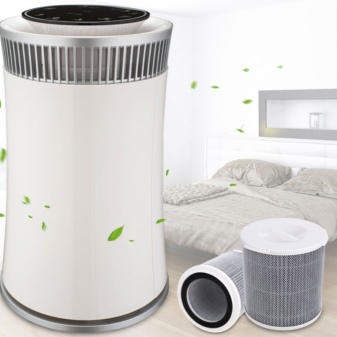
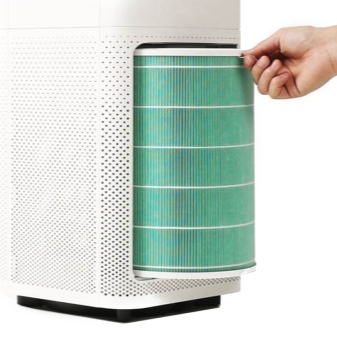
- Electrostatic models They work on the principle of a two-stage cleaning system: first, all air polluting particles go through the ionization stage, after which the air masses begin to blow through the positively charged plates, on which all the resulting "garbage" settles. The plates must be rinsed regularly with water.
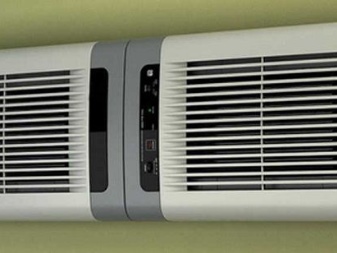
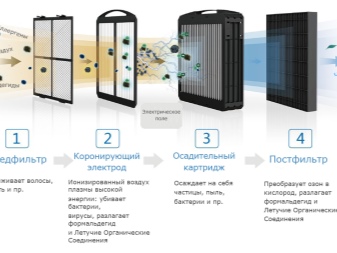
- Photocatalytic cleaners work a little differently. In this device, due to ultraviolet radiation, the decomposition of polluting particles to the state of molecules occurs, this method of cleaning allows you to most effectively fight bacteria, carbon monoxide and even viruses. Photocatalytic filters effectively remove all unpleasant odors.
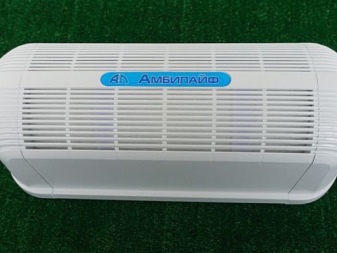

- Wet purifiers use the function of washing and humidifying the air in their work. Structurally, they are a tray with water and a special mechanism due to which the dust gets wet and begins to settle inside the device. As it gets dirty, the water needs to be changed.
Benefit and harm
We draw special attention to the fact that air purifiers do not belong to medical devices, nevertheless, they are able to neutralize almost all harmful pollution from the air in a residential area, while creating the most comfortable conditions for human life. It is noted that the purifier relieves the circulatory system and lungs from the excessive efforts that they spend on cleaning the air using their own respiratory system.
By turning on the air purifier regularly, you will get rid of hazardous substances such as:
- smoke, including tobacco;
- dust and hair of pets;
- allergens;
- fungal spores;
- bacteria;
- mold;
- dust mites;
- toxic gases;
- volatile chemical components;
- pollen of flowers;
- static electricity;
- odors of any origin.
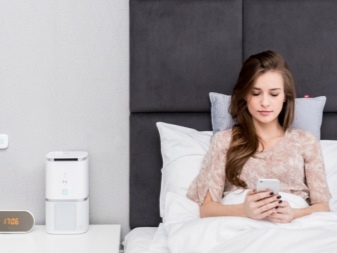
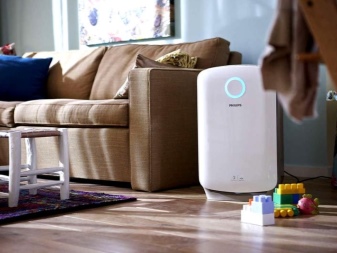
Using an air purifier allows you to save a person from allergic diseases, dirt and dust in the house.
Just think: more than 40,000 dust mites live in 12 grams of dust, while for every 150 square meters of premises, up to 20 kg of dust are generated annually.The waste products of the tick are the strongest allergen, from which headaches begin, eyes watery, and a chronic rhinitis occurs.
Airborne dust particles cause chronic fatigue, depression, and infectious diseases. All of these problems can be avoided by installing an air purifier in your home. Timely removal of biological pollutants from the air, as well as odors from pets, significantly reduces the risk of contracting viral and colds.
It's no secret that pathogenic bacteria are everywhere in homes: in air conditioners, where pets like to spend their time, in toilets and trash cans. Fungus and mold spores create colonies in humid rooms, they accumulate in split systems and air conditioners.
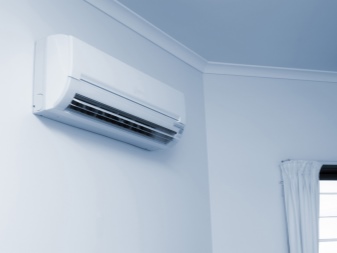
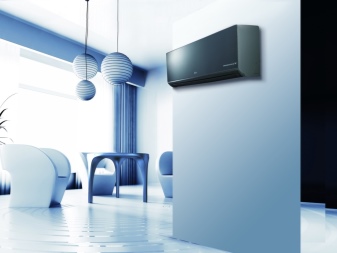
Household work is carried out every day in the house: laundry is washed, the floor and other surfaces are washed, household appliances are cleaned. Evaporated particles of cleaning agents and washing powders remain in the room air, and they often cause runny nose in children and adults, and cause asthma attacks.
Hazardous emissions from industrial enterprises and car exhaust, which come to our house from the street, also have a detrimental effect on humans. Sooner or later, their constant inhalation affects the health of any person.
In all these cases, an air purifier will help, which will make life more comfortable. An air purifier is essential in any home, but where allergy sufferers and asthmatics live, it can be truly vital.
Keep in mind that when choosing the right models, you need to consider some of the disadvantages of different types of cleaners. So, models with the ozonation option can be installed in the house only after consulting a doctor, since in large volumes ozone becomes poisonous and can be harmful to health.
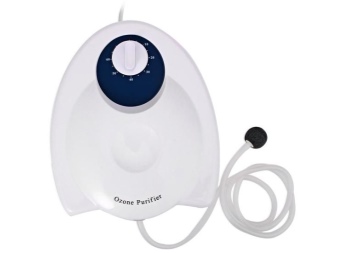

An air purifier with replaceable filters requires regular maintenance and replacement of units - if this process is started, the device will completely lose all its purifying functions and, conversely, will turn into a source of pathogenic microflora.
The photocatalytic air purifier, due to its functionality, is able to clean the air from bacteria and viruses by 95-97%. However, such a device is not recommended to be installed in children's rooms, since the resulting air becomes truly sterile, and in this case, the child's immunity, devoid of sources for resistance, is greatly weakened.
The selection of the air cleaner should only be done with the help of a specialist. If the purifier is chosen incorrectly, then at best it will simply not be useful, and at worst it will make household members continue to breathe dirty air and additionally cause damage to the health of children and adults.
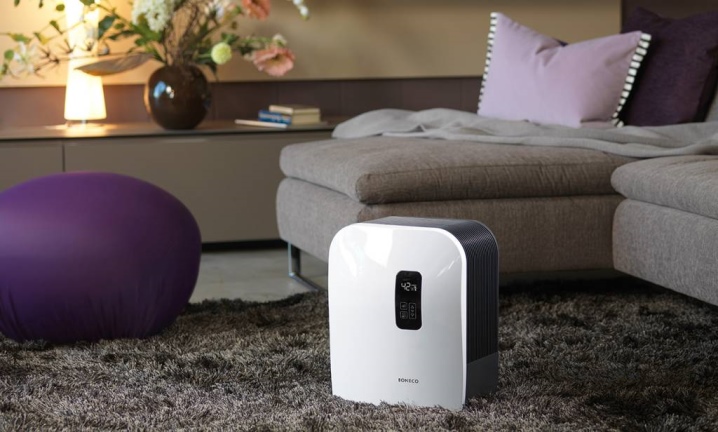
Description of species
There are various types of cleaners on the market that use different principles of work. Each of them is able to solve certain problems of air pollution better than others. The most important component in the design of air cleaners is the filter - the quality of cleaning the environment around a person depends on it. Having an idea of the characteristics of filters and their capabilities, it will be easier to decide which one is more suitable for each specific case.
Air purifiers can differ in:
- dimensions - compact (automobile) and standard for living quarters;
- method and type of installation - stationary and mobile, wall, floor, with installation at a certain height, built into the wall;
- service method - replaceable or cleanable filters (vacuum cleaner or rinsing with water).
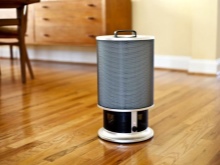

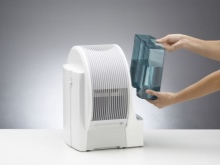
As mentioned above, purifiers differ in the principle of air purification. Let's take a closer look at the different types of filters.
Filtration
As the name suggests, filters play a major role in this design. It is they who hold back all unnecessary particles and return the purified air masses to the house. In this category, there are several basic types of units with different types of systems.
HEPA - provides the maximum possible purification of the air, elements with such marking can remove up to 99.97% of all pollution. The products are optimal for people suffering from allergic diseases and respiratory pathologies. At the same time, be prepared for the fact that such filters require constant maintenance.
At least once every 3-4 weeks, they must be vacuumed, and the filters must be replaced with new ones 2-3 times a year, while the price of removable consumables is quite high and this must also be taken into account before choosing purifiers with a HEPA filter.
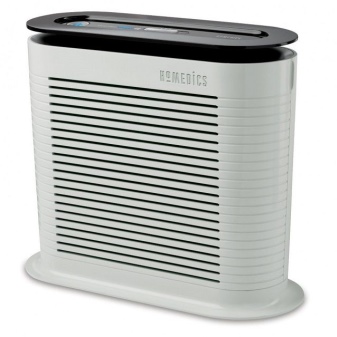

Models on a charcoal filter are an effective option for fine air purification, therefore, they are additionally equipped with pre-filters. These cleaners are not designed to trap bio-contaminants, but they are good at absorbing unpleasant odors.
When choosing, it is better to give preference to models with large granules or a corrugated structure, cellular ones have less efficiency.

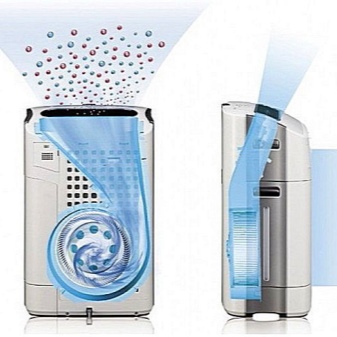
Electrostatic
This cleaning method is also called plasma. Such an air purifier is an assembly, inside which a plate is attached, which creates a strong electromagnetic field. It attracts all dust particles to itself and accumulates them. From time to time this part should be removed and rinsed thoroughly.
The undoubted advantage of such devices is that there is no need to buy additional consumables. However, it should be noted that the cleaning capacity of such devices is small. They neutralize only 80-90% of the dirt, and if the plate has not been cleaned, then this parameter is even less.
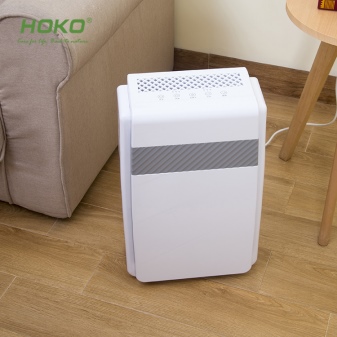
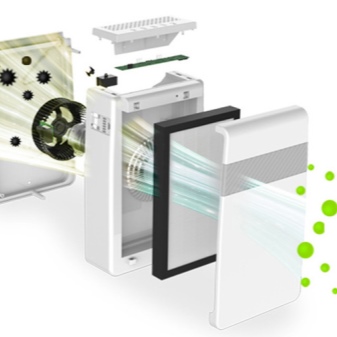
Ionization
Filters on the ionization system contribute to the creation of special gas compounds in the air, called air ions. They make the air fresh and purified, its quality reminiscent of the air in the forest after rain or mountain air. Air ions promote the activation of erythrocytes, due to which gas exchange in the lungs increases by 10-15%. Hence, the main advantages and positive effects of using such a purifier follow: users observe that their sleep is normalized, efficiency increases and there is a general improvement in well-being.
In addition, air ions attract dust particles to themselves, create more massive clusters from them, they settle on the floor. Of course, this by no means adds tidiness to the house, but dirt does not enter the lungs, and dust can be removed from the surface with ordinary wet cleaning.

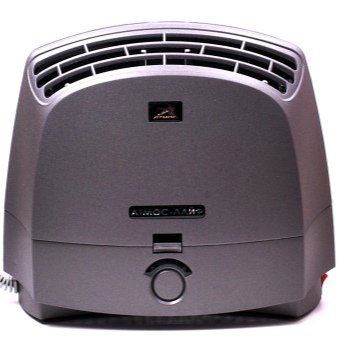
However, there is a downside to this optimistic picture. Ionization is categorically contraindicated for all types of viral infections; its use at high body temperature is unacceptable, some chronic diseases, as well as cancer. If there are children in the house who have not reached the age of one, it is also better to refuse such cleaning.
Excessive concentration of ozone produced at the outlet can cause significant harm - that is why, when choosing such a technique, it is necessary that the ozonation option can be turned off manually and the air purification process can be controlled.
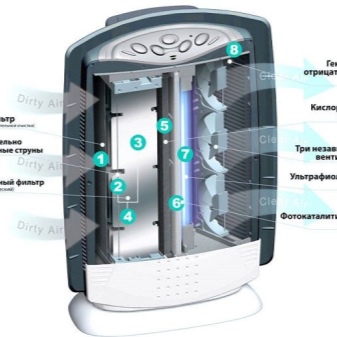
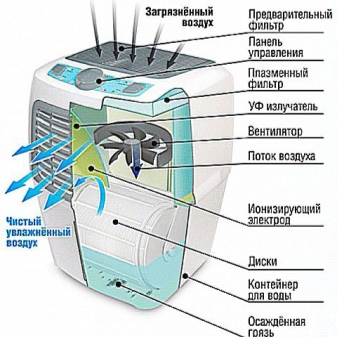
Water
In everyday life, such purifiers are better known as “washing” the air. Their design assumes the presence of blades that mix water and air to a finely dispersed mixture. All the dirt during such treatment settles on the wings of the device, after cleaning the air is again separated and already humidified returns to the room. Thus, such a device solves two problems at once: air purification and its effective humidification.
However, keep in mind that such a unit requires careful maintenance, its blades should be washed as often as possible, otherwise bacteria will appear on it, which in themselves can cause human infection. The most modern models partially solve this problem with the help of a disinfecting rod and an antimicrobial coating, but this does not provide complete protection, but only makes the cleaning procedure a little more rare, but the price of improved equipment increases quite significantly.
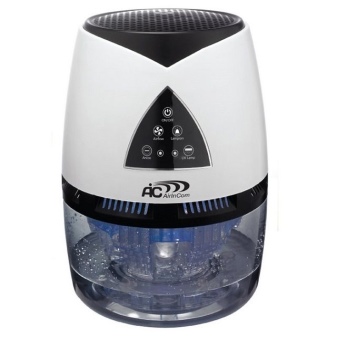

Photocatalysis
One of the most popular types of air purifiers is a device that works on the principle of photocatalysis. In this case, air enters a small compartment filled with titanium oxide, which acts as a photocatalyst; under its action in the light of ultraviolet radiation, all pathogenic bacteria, as well as mold, dust and other harmful particles, break down into separate molecules.
The creators of such devices claim that this equipment can neutralize carbon monoxide, cigarette smoke, phenols and even formaldehydes. However, there are currently few independent studies that could confirm the effectiveness of such a cleaning method.
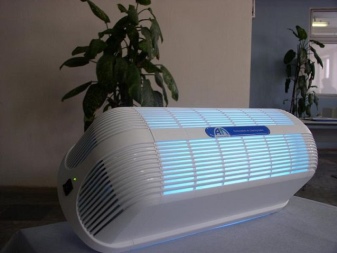
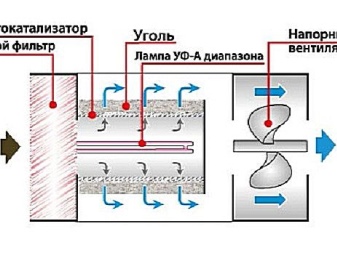
Humidifiers
A separate category of purifiers includes air humidifiers with a purification function. These devices differ from air washing in less cleaning efficiency, since their main task is to create a comfortable level of humidity in the room. All humidifiers on the market are divided into three groups: steam, ultrasonic and traditional mechanical. All of them work on the principle of moisture evaporation and release of its vapors.
Most of the household appliances in this group can not only humidify the air, but also aromatize it.
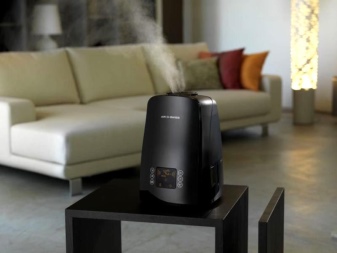

Model rating
We present the top of the most popular models of air purifiers.
- Tefal Intense Pure Air. This is a device that combines the functionality of several filters: preliminary, HEPA and charcoal, can operate in the ionizer mode. Allows you to rid the air of 97-98% of toxic impurities, as well as neutralize formaldehyde. The device successfully cleans a room up to 35 sq. m, productivity - 150 m3 / hour. There are many additional features: night turbo mode, as well as auto power off and timer.
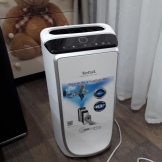
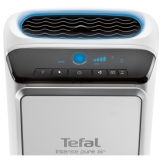

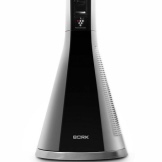
- Dyson HP00 Pure. A universal device that is engaged not only in air purification, but also has the function of cooling and heating the room. Includes a whole range of built-in filters: preliminary, as well as antibacterial, carbon, anti-allergenic and HEPA. The design provides for 10 operating modes, a shutdown timer and a remote control. The machine can be placed on the floor or on a table.

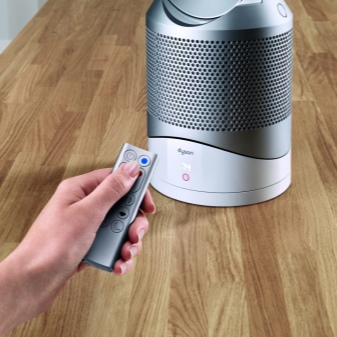
- Boneco P700. A very large, but high-performance air purifier. Optimal for use in offices and large homes. The product reliably removes dust, pathogenic microbes and hazardous chemical compounds. The device is additionally equipped with a sensor option for monitoring the air condition in the house. Provides night mode, flavor, and turbo cleaning.
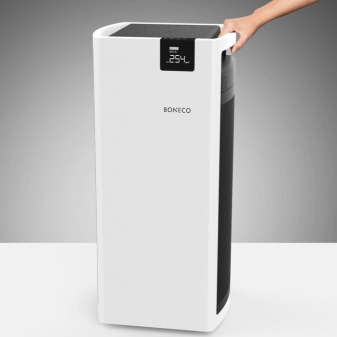
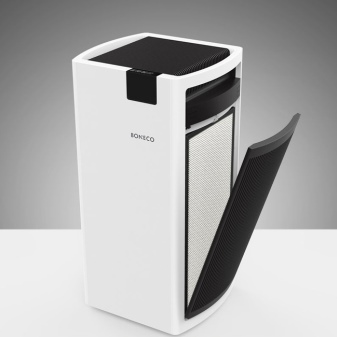
- Xiaomi Mi Air Purifier. A highly functional air cleaner with a HEPA filter, controlled via a WI-FI application, shows not only the level of contamination of the device itself, but also the general condition of the air in the house.
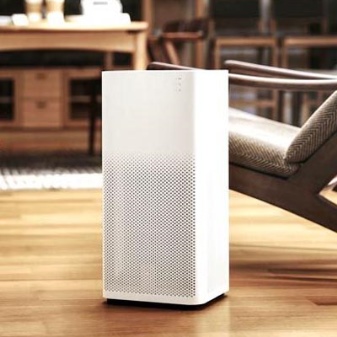
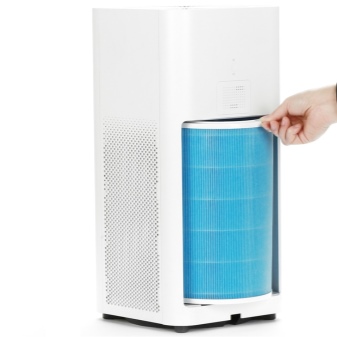
- Ecology Plus Super. This is a domestically produced air cleaner. It is a practical device with the option of ozonation and ionization. The device weighs 2 kg, making it easy to move from one living room to another.
Over the entire period of operation, the model has shown itself exclusively from the positive side.

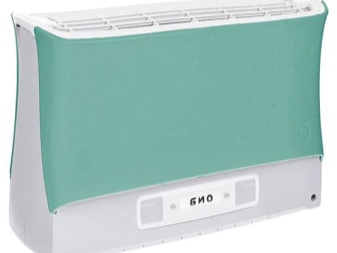
- Panasonic F-VXK70R. With the help of unique nanoparticles, it purifies the air at the micro level. Neutralizes 99.9% of harmful microorganisms, allergens and viruses.Air masses go through 3 stages of cleaning: at the first, they penetrate into a washable filter, which retains large particles, at the second, they are filtered by a 3-layer HEPA filter, at the third, the air is deodorized.
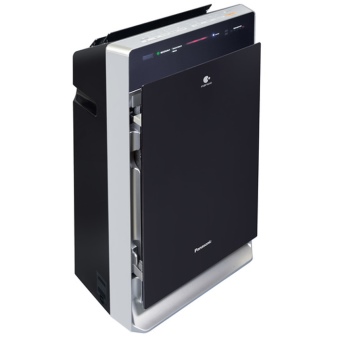
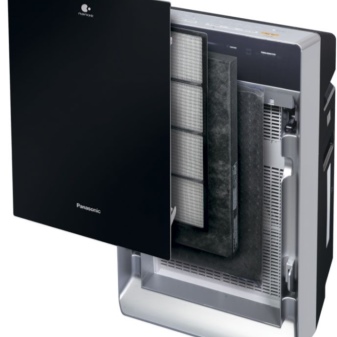
- Philips AC2887. Has the function of automatic tracking and control of the air condition. Destroys the smallest dust particles up to 0.02 microns. Works in 3 modes: standard, allergen delay mode, and destruction of viruses and bacteria. Noiseless.
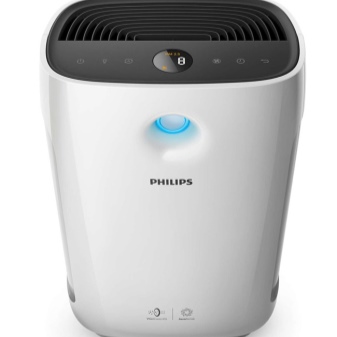

How to choose?
An air purifier will only work for the health of the household if it is correctly selected. When buying a model for your home or office, you need to start from a few basic criteria.
- Performance. This is one of the main characteristics, since an incorrectly selected performance entails very unpleasant consequences: if you buy a weak device, it simply will not cope with its functions, and the air will remain contaminated, and if it is a unit with overestimated performance parameters, it will become consume too much electricity.
As a rule, the calculation is based on the total area of the room to be cleaned, as well as the height of the ceilings. It is accepted that the optimal setting should let all the air in the room pass through itself at least twice in an hour.
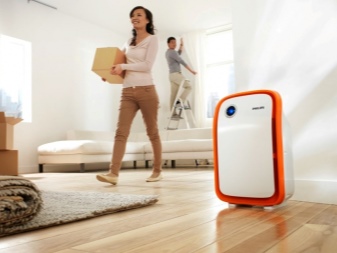
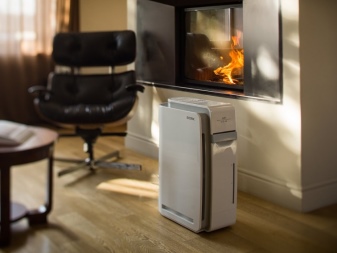
- Additional options. In order for the formation of a useful biocenosis in a room to take place with comfort for people, you need to pay attention to options such as:
- number of speeds - this parameter varies from 1 to 10, as a rule, home devices are equipped with 3-4 speeds;
- manual mode selection - the option allows the user to independently determine which settings need to be set for his device;
- "night" mode - allows you to reduce the level of noise and the brightness of the backlight during rest;
- turbo mode - provides for the fastest possible cleaning of air masses;
- timer - sets the time when the purifier needs to be turned on, so that by the time you return from work in the house there is already a healthy atmosphere;
- aromatization - in some units an additional aromatized capsule is provided, when activated, a rather pleasant smell spreads throughout the room;
- quartz treatment - allows you to disinfect a room with a quartz lamp.
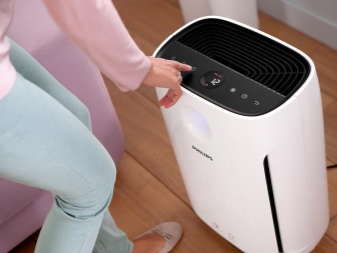
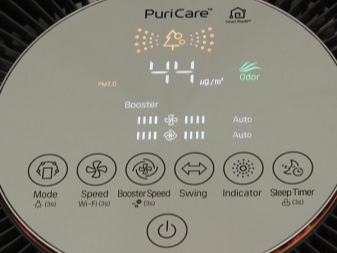
Less significant, but nevertheless important parameters for choosing an air cleaner model include the following.
- Accommodation - the device can be floor-standing or table-top, this parameter must be taken into account when purchasing a suitable model. For example, if you place a desktop device in the farthest corner of the room, it will have no effect.
- Dimensions (edit) - the choice is great, on sale you can find a variety of models: from compact to fairly large units. You need to focus only on your personal needs.
- Power consumption - indicates how much electricity is needed for the effective operation of the device. It should be noted that air purifiers are very economical, the consumption parameter does not exceed 100 W, and in most cases it is in the range of 30-60 W.
- Noise level. In order for a room cleaner to be able to cope with its tasks as efficiently as possible, it must be turned on for at least 7-10 hours a day, so the level of the emitted noise should be comfortable for a person. On average, these devices emit 45-60 dB, a similar level is acceptable in the daytime, however, for use at night it is better to stay on models with a volume of 20-30 dB.
- Control type. In the simplest products, control is carried out using a mechanical switch, while more advanced products have buttons or even a touch panel. The manufacturers complement the latest novelties with the ability to control remotely via a remote control or even via a smartphone.
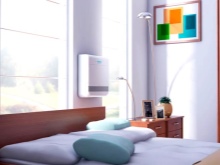
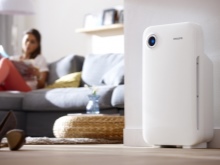
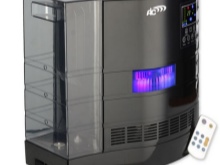
How to use?
After you choose the model that is optimal for your room, you need to dwell in more detail on the issues of using the device.
First you need to decide where you will install it. Modern homes usually have more than one room, unless it's a studio. Typically, the manual states the maximum room size. There is an opinion that if you buy a device of increased power, then you can clean the air in the whole house for 3-4 rooms at once. However, this is not true - the unit cleans the air exclusively in the room where it is installed.
Many experts recommend installing the purifier where the person for whom you purchased the device sleeps and spends most of the time, for example, a child, a person with an allergic disease or pathology of the circulatory and respiratory system.

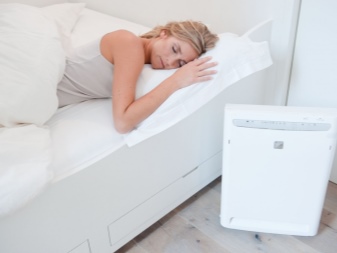
It is not recommended to move devices from one room to another, since any unit needs some time to establish an optimal allergenic background and effectively maintain it in the future. Purifier should not be installed near batteries and other heating devices, since they lead to its malfunction, also the unit cannot be placed on the windowsill.
We draw your attention to the fact that the air purifier is an electrical household appliance, therefore, if it is used incorrectly, not only damage to the unit itself is possible, but also electric shock to the user. When installing any air purifier in the house, you must adhere to the following rules:
- completely exclude the possibility of access to the device for children and persons in need of constant care, as well as pets;
- exclude any possibility of penetration of liquids and any foreign objects inside the unit;
- it is not allowed to use the device outdoors;
- do not block the access of air masses to the air outlet and air intake openings.

Do not forget that dirty filters greatly reduce the efficiency of the device, therefore they need to be cleaned in time, and those that are subject to periodic replacement should be replaced with new ones. The accompanying documentation for each model usually indicates the recommended frequency of replacement and cleaning of the filters. In addition, many manufacturers install sensors on their modern purifiers to signal when the filter needs to be changed or cleaned. The most advanced models offer a self-cleaning function.
Review overview
Numerous users unequivocally say that buying an air purifier at home is necessary, and if there are children and often sick people in the house, it is vital. It is noticed that in the cleaned rooms people feel better, they have the activity, efficiency increases, sleep is normalized, the state of health improves, and the manifestations of allergies disappear.
However, only high-quality equipment can provide effective air purification from all kinds of pollution and volatile impurities.
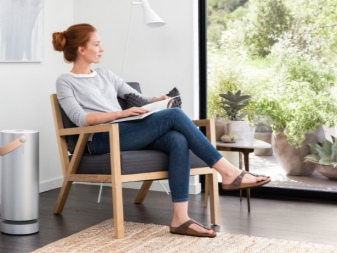
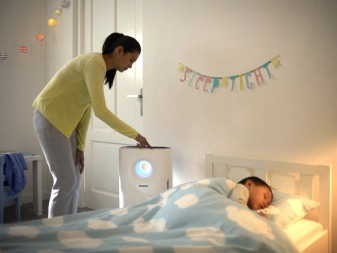
See the following video for testing air purifiers.













The comment was sent successfully.